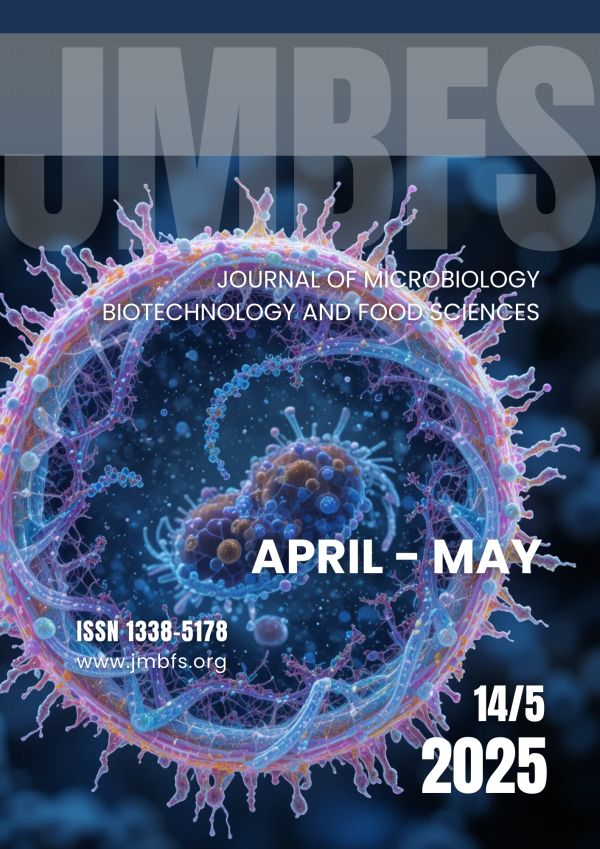THE INORGANIC COMPONENTS CONTENT IN RAW-COOKED MEAT PRODUCTS ENHANCED WITH THE GRAPE POMACE
DOI:
https://doi.org/10.55251/jmbfs.11895Keywords:
meat product, mineral substance, microelement, macroelementAbstract
Antioxidant nature stands out as the main bioactive property of grape pomace, which is attributed to their rich phenolic composition. Apart of phenolic compounds, grape pomace also represents an abundant source of mineral substances. Mineral compounds perform a variety of vital physiological tasks, including the regulation of acid-base balance, osmotic pressure, adrenal gland function, proper cardiac action, and protein and carbohydrate metabolism. In our study we evaluated micro- and macroelement profile of pork sausages enhanced with grape pomace extract and powder obtained from two different varieties – Cabernet Franc and Merlot. The highest sodium (Na) level (4869.20 mg/kg) was found in sausages with the addition of Merlot grape pomace, albeit in the form of an extract. The Ca content varied from 60.90 to 95.60 mg/kg, with sample with Cabernet Franc powder (CF-P) addition having the highest concentration. Sample with Merlot powder addition (M-P) had the highest magnesium (Mg) (106.7 mg/kg) and phosphorus (P) (2718.3 mg/kg) levels. Samples examined in our study were absent from highly hazardous elements - lead (Pb) or cadmium (Cd). Based on our findings we believe grape pomace could be an interesting source of mineral substances for enhanced meat products, however, further multidisciplinary study, including food safety, toxicology, or sensory analysis, is still needed.
Downloads
Downloads
Published
How to Cite
Issue
Section
License
Copyright (c) 2023 Tomáš Tóth, Judita Lidiková, Marek Bobko, Michal Baluch, Alica Bobková, Janette Musilová, Andrea Mesárošová, Natália Čeryová, Lukáš Jurčaga

This work is licensed under a Creative Commons Attribution 4.0 International License.
All papers published in the Journal of Microbiology, Biotechnology and Food Sciences are published under a CC-BY licence (CC-BY 4.0). Published materials can be shared (copy and redistribute the material in any medium or format) and adapted (remix, transform, and build upon the material for any purpose, even commercially) with specifying the author(s).





